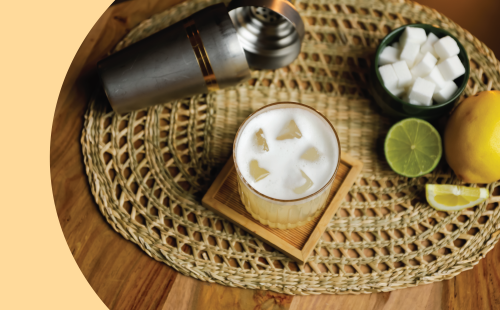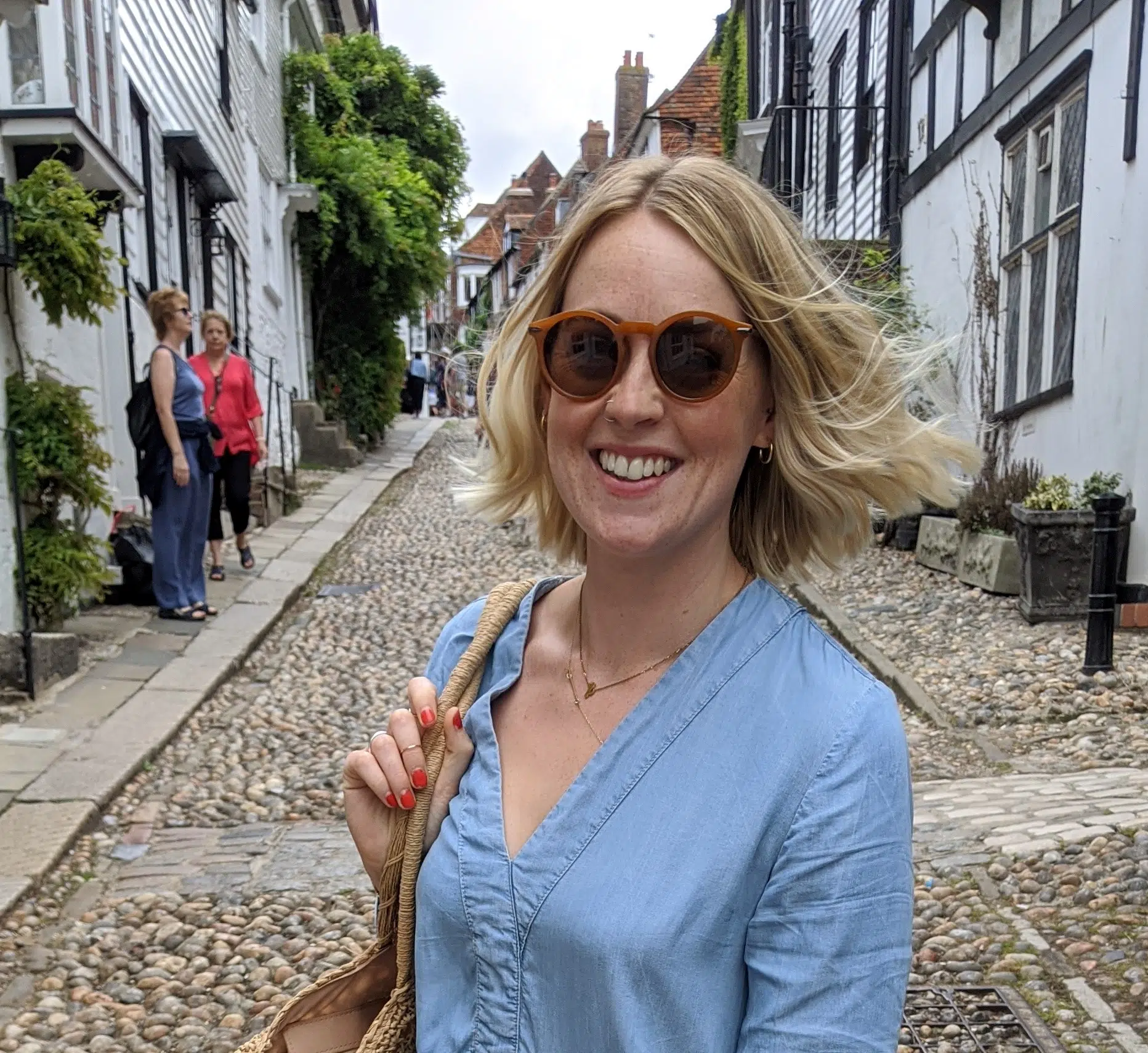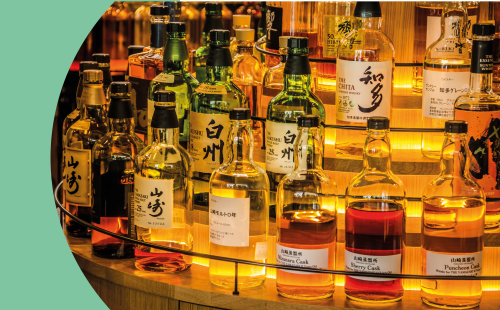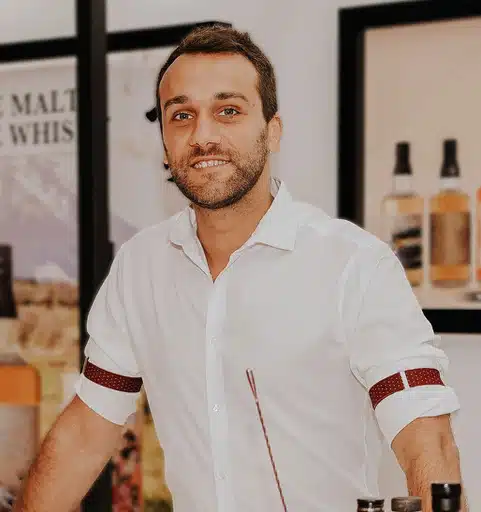South Africa has a rich and long history as the oldest of the ‘New World’ winemaking regions, with some of the highest-awarded wines in the world being produced over the last few years. But, few people know about its ingenious array of spirits, from 20YO brandy to gin, vodka, and even vermouth.
While grapes are used as the base for most of the spirits, it’s the infusion of endemic herbs and flowers from the mighty Cape Floral Kingdom that make them truly unique. The Cape Floral Kingdom may be the smallest of the six Floral Kingdoms but it is certainly the most abundant, with more species of plant being found on the slopes of Table Mountain than in all of Great Britain.
And it’s these plants, known as fynbos, that separate South African spirits from the rest of the world, with a harmony of flavours that can’t be replicated anywhere else. Dive into a collection of distilleries and spirits that can give you a taste of the country’s ever-expanding spirits industry.
Hope Distillery
The popularity of craft gin grew at a phenomenally fast rate in the UK between 2010 and 2016, with the number of distilleries more than doubling in six years from 116 to 233. In 2013, Lucy and Leigh Beard (South Africa-born but living in London at the time), noticed the growing trend and decided to head back to their hometown to see if there was any appetite for a craft gin distillery in Cape Town—there was. By 2014, they had set up Cape Town’s first distillery, Hope Distillery.
The first gin they made was a punchy juniper-forward London Dry – wanting to get the basics right before moving onto something more creative – followed by Hope African Botanical Gin and Hope Mediterranean Gin. The African Botanical Gin celebrates Africa’s distinctive fynbos, distilled from grain spirit and infused with eight botanicals such as kapokbos (wild sweet rosemary), and buchu, a fragrant shrub that lends uniquely punchy blackcurrant notes. They also make rum distilled from fresh sugarcane juice, a vodka, and are currently working on a vermouth too.
Hope Distillery has made quite the mark in the distilling industry in South Africa and now creates and produces a number of spirits on behalf of other brands, such as A Mari Atlantic Ocean Gin, Clemengold Gin, Blossom & Hops gin, Musgrave Gin, and Bloedlemoen.
Many of the spirits can be tasted at Hope Distillery’s brand-new cocktail lounge, StrangeLove.
More gin mixes on our Top Gin Cocktails page.
Bloedlemoen Gin
Bloedlemoen, pronounced ‘Blue’d Le Moon’, is a handcrafted, small-batch gin made from ten botanicals, one of which is the deep citrus punch of Tarocco Blood Orange. It was founded by three food and drinks industry specialists but is now made by Cape Town’s Hope Distillery. The award-winning gin was the first blood orange gin in the world, using fruit sourced locally from the Western Cape, alongside juniper, coriander, cassia bark, nutmeg, liquorice root, angelica root and cardamom, which gives this gin its unique citrus-heavy flavour. There are two spirits now in the Bloedlemoen range, the classic blood-orange and Bloedlemoen Amber, a richer, winter gin infused with fynbos botanicals, with sweet caramel notes.
After many experimental batches, Adi released his first Caperitif in 2014. The winning recipe lies in the 35 natural botanicals, many of which are from the Cape Floral Kingdom such as konfettibos, rooibos, wilde als, kapokbos (wild sweet rosemary), African wormwood, and grapefruit. The botanicals are added to Adi’s base wine—a blend of white grapes, predominantly Chenin Blanc—which is then fortified to 17.5% and left to seep for 3 months. It’s then added into Adi’s solera system, which holds around 24,000 litres before being bottled and enjoyed all over the world.
Available in the UK from Swig, The Whiskey Exchange, and Hedonism.
Caperitif
Caperitif is a vermouth with a very long history dating back to the early 1900s in South Africa—and centuries before in small Mediterranean villages, who imbibed it as a medicinal tincture. The spirit made its way from South Africa across the world and in the mid-1920s was scored in the pages of the Savoy Cocktail Book. Unfortunately, production of Caperitif ceased altogether in South Africa by the 1960s—wuntil a Danish man uncovered the story in the Savoy Cocktail Book over 50 years later, and in his search for the missing ingredient, he found famous Swartland winemaker, Adi Badenhorst, who was more than up for the challenge.
After many experimental batches, Adi released his first Caperitif in 2014. The winning recipe lies in the 35 natural botanicals, many of which are from the Cape Floral Kingdom such as konfettibos, rooibos, wilde als, kapokbos (wild sweet rosemary), African wormwood, and grapefruit. The botanicals are added to Adi’s base wine – a blend of white grapes, predominantly Chenin Blanc – which is then fortified to 17.5% and left to seep for 3 months. It’s then added into Adi’s solera system, which holds around 24,000 litres before being bottled and enjoyed all over the world.
Available in the UK from Swig, The Whiskey Exchange, and Hedonism.
Tokara OX Potstill Brandy
Tokara’s first brandy was released in 2005, followed by a 10YO in 2011. By 2020, Tokara was ready to release an XO blend, which has an average age of 16.5 years. Slow maturation in Limousin oak barrels enhances the distinctive characteristics of the Tokara XO Potstill Brandy, with complex notes of vanilla, cinnamon and nutmeg, alongside dried fig, peach, raisins, caramel, dried apricots and cocoa butter, which linger on the palate.
Tokara XO Potstill Brandy has won multiple national and international awards, such as Gilbert & Gaillard Double Gold and Brandy Masters Gold medal.
UK distributors: ABS Wine Agencies
Enjoy Tokara XO Potstill brandy at room temperature in a whiskey glass—with or without a block of ice.
Pienaar & Son
Founded by a father and son, Pienaar & Son is a disruptive craft spirit brand in Cape Town, set on challenging perceptions with their unique creations – from the liquid to the packaging. Tired of composing music, Andre ‘the son’, bought his own small potstill and began making gin and whiskey. Having majored in chemistry and biochemistry, he enjoyed being able to ‘nerd out’ yet still be creative. This was around 2013, just as gin was taking off in Cape Town, and as it happens, Andre’s dad is a chemical engineer with more than 40 years of distilling technology experience, so together, they designed and built a 500l potstill.
The first spirits they created were Empire and Orient Gin, both a shout-out to Cape Town history: Empire is about the British who brought gin to Cape Town and Orient a nod to the eastern spice trade. One of their most popular gins, however, is called Ugly Gin. The liquid in the bottle is as good as that of an Empire or Orient, but the bottle lacks the grandeur, and instead, Andre uses an old jar, with labels made from unused label cut-offs. With such a provocative name, it instantly sparks interest, and conversation, which is exactly what Andre wanted. No fancy bottle, no sparkles – all of which boost the price point – just award-winning, premium gin, sold at around R200 (roughly £9) less than your average gin.
Andre also makes a Tiny Batch Whiskey (again a play on the fact that ‘small batch’ isn’t all that ‘small’), a vermouth, an on-the-go negroni, and a range of collaboration spirits.
Also interesting is our collection about classic whiskey cocktails.
Geometric Drinks
Founded by Jean-Baptiste Cristini (Tista), Geometric Drinks seeks to harness all that the Cape has to offer, taking the balance and structure found in nature and using it to produce an expression of botanical and grape-based drinks. Tista was born and raised in the Cape, to a South African mother and French Father. Enthralled by wine since his early teens, he followed his patrilineal heritage to Burgundy and Champagne, before returning home to the South African wine industry in 2013. But for Tista, making wine didn’t harness enough of the Cape’s unique surroundings. He was thirsty for more.
Tista’s first mission was to make his own tonics. He wanted to create something that adults could enjoy both on its own or as an accompaniment to a spirit. He made three botanical concentrated tonics: Citrus, Spice, and Floral, each a combination of herbs, spices and flavours indigenous to the Cape, and containing just a quarter of the sugar than a regular tonic. The standard serving is 50 ml of tonic essence and 150-200 ml of carbonated water. As a G&T, Tista matches the amount of tonic essence with his Geometric Gin, 50:50, for the perfect balance.
Geometric Gin is distilled from neutral spirits and fine grape spirit (Tista’s homage to wine), resulting in a textured, silk-like gin. Fresh juniper is underpinned by citrus and cardamom, followed by heathery fynbos found in most South African gins.
Geometric Gin is available in the UK from Hedonism and The Whiskey Exchange and can be found in a selection of top restaurants.
South Africa’s Most ‘Lekker’ Cocktails
Clover Club Cocktail
- 50ml Hope African Botanical Gin
- 15ml Cinzano Extra Dry vermouth
- 25ml house-made raspberry syrup
- 20ml lemon juice
- 20ml cellulose
- Dry shake all the ingredients in a cocktail shaker and fine strain into a chilled coupe glass
- Garnish with a raspberry skewer.
Bloedlemoen Amber
- 50ml of Bloedlemoen Amber
- Top with Fever-Tree tonic water
- Orange Zest
Caperitif & Rooibos Cocktail
- 35ml Caperitif
- 35ml of gin or vodka
- Top with Rooibos Iced Tea
- Add fruit of choice – grapefruit/orange/lemon
Ugly Gin Negroni
- 50ml Ugle Gin
- 50ml Martini Rossa / Caperitif
- 50ml Campari
Geometric Martini
- Place the empty Martini glass in the freezer or fill with ice to cool
- Fill a mixing glass with large cubes of ice
- Pour 10-15 ml of dry white vermouth over the ice and stir vigorously
- Strain all the melted ice and vermouth out of the glass, leaving only the solid ice
- Pour 50-75ml of cold Geometric Gin over the ice – for a slightly fruitier martini, add 5ml of dry vermouth
- Stir to desired concentrate (45 times)
- Settle for one minute then pour into a Martini glass (discard any ice)
- Peel the zest of a lemon and twist over the glass then put inside the Martini
This is just a handful of the amazing spirits being made in South Africa, from small batches to large-scale producers like Inverroche—the first distillery to use fynbos from the Cape in the gin distilling process and is now a three-strong range, with international distribution.
More Cocktails, Drinks and Recipes on DrinksWorld
- Check out our List of Best Cocktails
- Learn more about simple drinks: Easy Cocktails and the Best Mixed Drinks.
- More liquor and spirit guides: Types of Alcohol and Liquor and Alcoholic drinks and Beverages.
The Cape Floral Kingdom combined with its rich grape-growing regions, allows distillers to bring new and exciting flavours into the spirit category. From ‘New World’ wines to ‘New World’ spirits, South African spirits are the country’s best-kept secret—but they won’t be for long.





